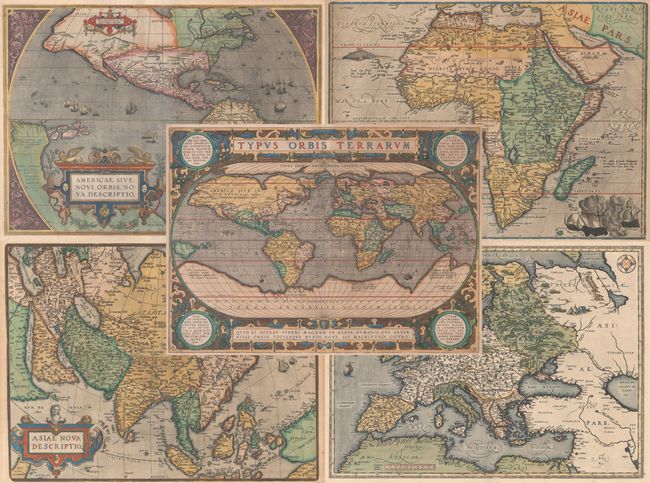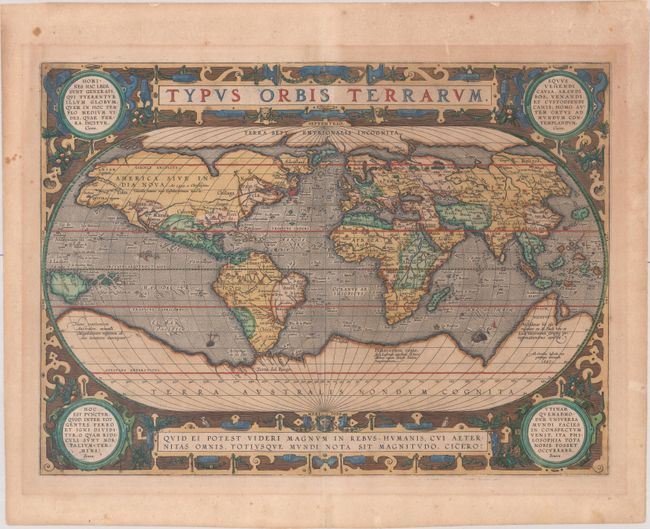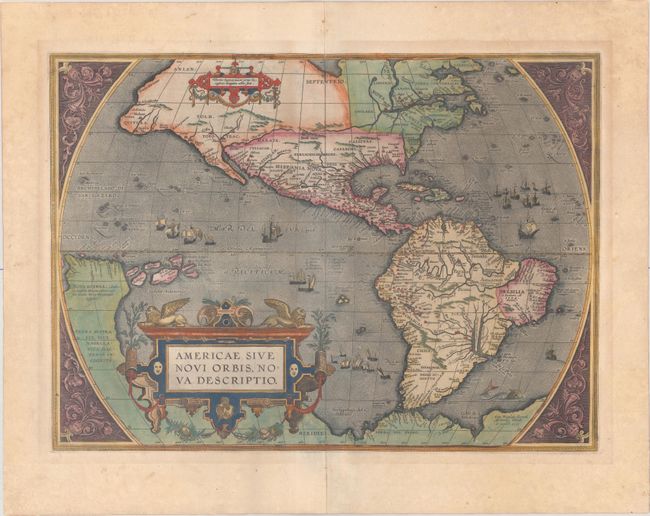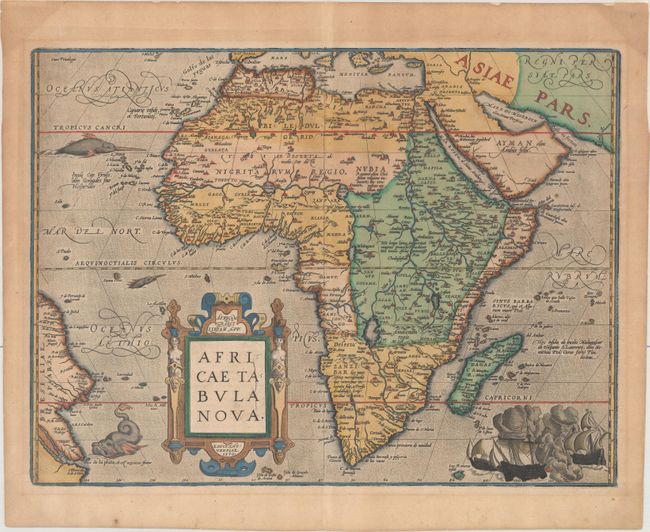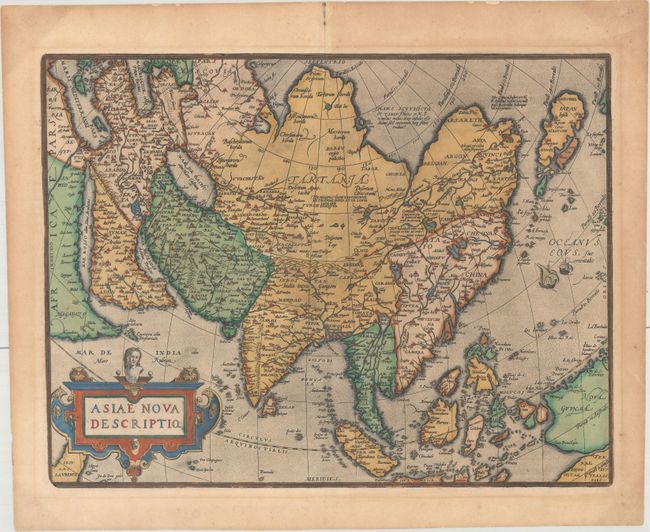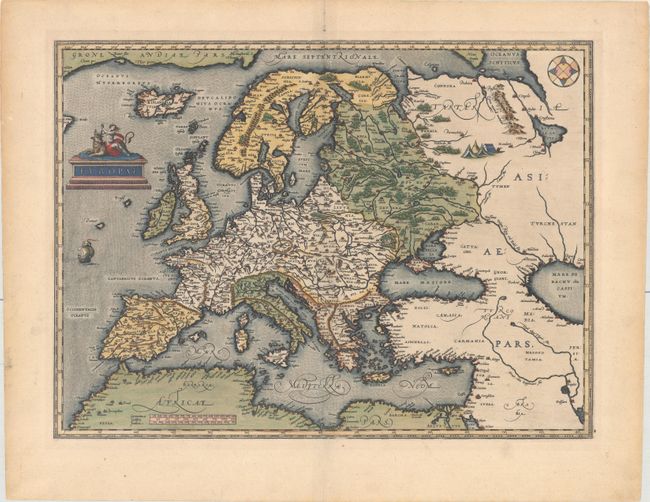Catalog Archive


Auction 174, Lot 12
Folio Set of Ortelius World and Continents
"[Lot of 5] Typus Orbis Terrarum [and] Americae sive Novi Orbis, Nova Descriptio [and] Africae Tabula Nova [and] Asiae Nova Descriptio [and] Europae", Ortelius, Abraham
Subject: World & Continents
Period: 1570-87 (circa)
Publication: Theatrum Orbis Terrarum
Color: Hand Color
Size:
See Description
Download High Resolution Image
(or just click on image to launch the Zoom viewer)
(or just click on image to launch the Zoom viewer)
